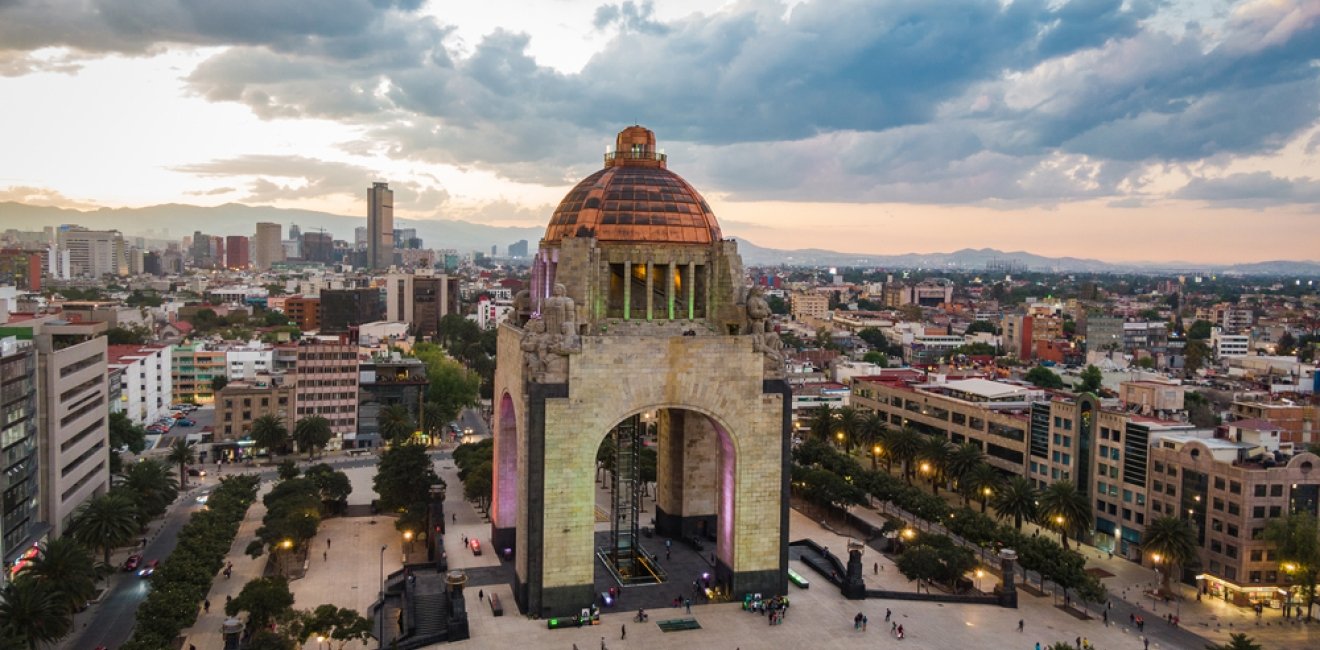This piece is based on remarks given by Dr. Roderic Ai Camp at the University of Nevada, which focused on the role of women in Mexican politics and elections over the last sixty years, with a specific focus on the current presidential election and the two leading candidates.
More women are running for office than any other election in Mexico’s history. In the 2024 presidential race, the two leading politicians are women. Female politicians have been of personal interest to me since the early 1970s. Consequently, it is important to explore this topic from an historical perspective, hopefully shedding light on their role, including insights from numerous interviews I have been fortunate enough to have with successful female politicians in Mexico.
As some of you know, Mexico’s culture generally, and in politics specifically, has reflected a dominant masculine influence, represented by the word machismo, a Spanish word which has become common-place in our own language. As is true elsewhere, women in Mexico were not allowed to vote until 1953. On the other hand, the Mexican Revolution of 1910 briefly opened up the possibilities for women to take on political roles. In fact, Frederick Turner argued in the 1960s that, “Women of all social classes in Mexico today look back on the Revolution of 1910 as the significant initiator of their political rights and their social emancipation.” We have well-documented examples of women actively participating directly in the fighting, and in several cases, actually leading small cavalry guerrilla groups.
More directly related to political participation is the fact that Yucatan actually recognized their right to vote in 1922, resulting in three women elected to the state legislature and one to the city council.
At the national level, President Cardenas was able to get Congress to support female voting rights in the 1930s, but it was never enacted into law. In 1946, all women were allowed to vote in municipal elections. When I interviewed a prominent figure who was on the National Executive Committee of the National Revolutionary Party (predecessor of PRI) in the 1940s, he explained that the leadership was afraid to give women the vote because they would be likely to vote for conservative opposition candidates viewed positively by the Catholic Church. Interestingly, the first opportunity women had to vote for president was in the 1958 election, but only 48 percent did so.
General attitudes regarding the role of women in Mexico continued to impact the likelihood of their pursuing political careers. In the 1950s, a survey in Mexico City, revealed that 91 percent of men, and 90 percent of women, agreed with the statement that a woman’s place was in the home. Such views were being passed on to the next generation, suggested by a 1960s survey of students, where 87 percent of boys, and 90 percent of girls, agreed with this statement. But those attitudes went far beyond just the generalized attitudes among males and females in Mexico. Those biases were even more definitive in the legal system.
In the pre-democratic era of Mexican politics, women slowly began to achieve positions in all branches of government. Interestingly, in the Mexican case, women first achieved important public offices nationally through the judicial branch. The first woman to serve in the Federal Court of Appeals was appointed in 1947. It is worth noting that while a number of women achieved positions in the lower judicial levels through the 1970s, the judicial branch did not exercise considerable political influence.
In Mexico, the executive branch exercises the most political influence. In fact, it has been so influential compared to the legislative branch, that the Mexican public generally, and politicians specifically, have a dismissive attitude toward the institution.
I can illustrate this attitude from my own personal experience. In 2003, I was invited to give a presentation to all of the PRI members of Congress in Puebla, Mexico. After the presentation, my wife and I were invited to dinner by a friend who was a three-time member of Congress. During our dinner in a prominent restaurant, an official from the staff of the governor of Puebla approached our table, and told me that the governor had invited us to dinner. Although it was obvious, I explained that we already were eating dinner with my friend. He left, and then returned twice. I considered him to be rude, but understood he was obeying the wishes of the governor. He kept saying, “but sir, this is the governor,” as if I didn’t understand this political protocol. I explained that we were eating with my best friend in Puebla, a member of Congress, and to convey that to the Governor. This, of course, illustrates the attitudes among political office-holders at that time.
Why is it crucial that Mexican women obtain influential positions in the executive branch, rather than in the legislative or judicial institutions? If we examine the period from 1952 to 1976, only 3 women held top executive positions. The first woman to be appointed to the level of assistant-secretary was selected for that position in 1970 in the Secretariat of Public Education.
Essentially, the typical path to top decision-making posts in Mexican cabinets, requires experience in the executive branch. In a study of more than 900 cabinet secretaries from 1958 to 2012, my colleague and I found evidence of gender discrimination in executive appointments, especially in agencies which never had a female secretary or assistant secretary. Ironically, women had greater policy expertise, based on professional experience and education, and stronger political skills based on electoral experience and political party leadership.
It is worth noting that women politicians in Mexico relied heavily on family connections than did men, an influential source of future politicians. Furthermore, women, similar to men, also rely heavily on personal connections other than family. A former Assistant Secretary of Human Rights and Democracy in the Secretariat of Foreign Relations, Mariclaire Acosta Urquidi, told me “I think that in my experience, the fact that influential people knew my work, were key factors (beyond her family).”
One of the most dramatic changes in Mexican politics was the introduction of gender parity in the legislative branch in 1996, and strengthened in 2002. This pattern became national at comparable levels when a 2014 constitutional reform guaranteed gender parity for all legislatures. By the beginning of Lopez Obrador’s administration, Mexico ranked eighth in the world in the percentage of women in the legislative branch. It might surprise many of you to learn that Mexico was far ahead of the United States in their appointments to top judicial posts. The first female justice (Maria Cristina Salmoran de Tamayo) of the Supreme Court took office in 1961, twenty years before Sandra Day O’Connor became the first female justice in the U.S.
These achievements in the legislative and judicial branches are noteworthy in increasing women’s involvement in national political leadership. Even more important, however, is for women to serve in top cabinet positions, and equally significant, in those cabinet agencies which are the most influential politically and in public policy. Calderon was the first president to open top cabinet posts to women. Midway through his presidency in 2009, women were in charge of Public Education, Tourism, Energy, and Foreign Relations. As of 2018, only one woman, Josefina Vazquez Mota, a two-time cabinet secretary, became a presidential candidate of a major political party, the PAN. In 1994, however, Cecilia Soto Gonzalez ran for president representing the Labor Party. She was the first female presidential candidate to win a million votes. By the beginning of Lopez Obrador’s administration, twenty different women had served in 22 posts as cabinet secretaries. AMLO, has taken this pattern to a new level, appointing the first gender-parity cabinet, and women to top agencies.
If we take note of top executive experience at the state level, as governors, only seven women have served in that position.
Why is it important to understand female representation at these different levels and in different branches of government? In Mexico, most presidential candidates have had experience as governors or cabinet secretaries. How do all of these patterns affect the two leading candidates in the 2024 elections?
Claudia Sheinbaum, the former mayor of Mexico City (2018-2023), is the leading candidate as of April, representing Morena (National Regeneration Movement), the party founded by Andres Manuel Lopez Obrador (AMLO). Not only has she attracted attention as a female candidate, and if elected, would be the first female president in Mexico, she would be the first Jewish candidate. Her parents are both Jewish and scientists (father a chemist) and (mother a biologist). Her grandparents immigrated to Mexico from Lithuania and Bulgaria. Sheinbaum graduated from the National Autonomous University in Mexico City with a degree in physics. This university has produced more national politicians, and more presidents of Mexico, than any other institution. She completed a Ph.D. at the Lawrence Berkeley National Library in California (1991-94), and was a serious researcher, having published many articles and two books on energy and the environment and sustainable development. Her political career began with an active involvement in student politics at UNAM. She served as the Secretary of Environment of the Federal District under Lopez Obrador from 2000-2006. In 2015, she became mayor of Tlalpan in Mexico City.
Her opponent, Xóchitl Gálvez, leads a coalition of the National Action Party (PAN), the Institutional Revolution Party (PRI) and the Party of the Democratic Revolution (PRD), known as the Broad Front for Mexico. In addition to being a woman, she is the daughter of an indigenous father and a mixed-race mother. She was born in Tepatepec, Hidalgo, a community including Otomi indigenous Mexicans. Her father is Otomi, and her mother is part Otomi. If elected, she would be the first president since the 19th century (Benito Juarez) from an indigenous background. In addition, she is from a modest background, and worked as a child selling desserts to help her family.
She eventually attended the National University of Mexico, where she earned a degree in computer engineering. She eventually founded her own company (OMEI), which is involved in intelligent infrastructures. She created a foundation to help mothers and children suffering from malnutrition in indigenous areas. In 2000, President Fox appointed her to direct the National Institute of Indigenous Peoples, where she served until 2006. In 2010, she ran for governor of Hidalgo from a coalition of parties, barely losing with 47 percent of the vote. From 2015-2018, she was mayor of Miguel Hidalgo in Mexico City. In 2018, she was elected as a senator from PAN, serving until 2023.
Although Sheinbaum appears likely to win the presidential race as suggested by recent election polling, the election process itself reveals a number of conditions which may produce significant consequences for democracy in Mexico. The election will take place on June 2nd. In addition to the presidency, there will be elections for all members of Congress, for 9 governors, for the mayor of Mexico City, and for 31 state legislatures. There are currently 98 million voters.
The National Electoral Institute (INE), which is responsible for Mexico’s election, has established clear guidelines for funding the presidential campaigns. Legally, monies must come from government funding, not private sources. Since 1996, the Constitution requires that parties are assigned funding on the basis of a formula designed to promote fairness in the elections, with 70 percent distributed based on the percentage of votes each party received, and 30 percent equally to all parties regardless of size, as well as an assigned amount for independent candidates.
In 2024, 612 million dollars will be spent on public funding. Each party may accept up to a total of 7 million dollars from their own ‘party members; 2.5 million from supporters, and 2 million from individuals. It’s revealing to know that parties must allocate at least 3 percent of the total amount they received for ordinary activities to the training, promotion, and development of political leadership of women. INE is required to audit these donations before the campaign begins.
Regardless of the outcome, Mexico will have a female president, clearly demonstrating that the future of female politicians nationally will continue to be successful. Ironically, many women in the past relied on experience at the local level to establish successful political careers. To achieve comprehensive success in public life, they will need to replicate comparable achievements at the gubernatorial level.
Author
Philip Mckenna Professor Emeritus of the Pacific Rim, Claremont Mckenna College

Mexico Institute
The Mexico Institute seeks to improve understanding, communication, and cooperation between Mexico and the United States by promoting original research, encouraging public discussion, and proposing policy options for enhancing the bilateral relationship. A binational Advisory Board, chaired by Luis Téllez and Earl Anthony Wayne, oversees the work of the Mexico Institute. Read more

Explore More
Browse Insights & Analysis
Greenland’s New Governing Coalition Signals Consensus

The Future of France's Far-Right Party

Ukrainian Issue in Polish Elections

